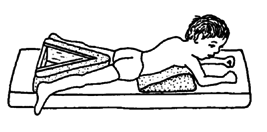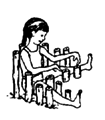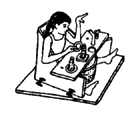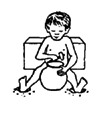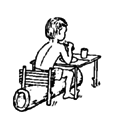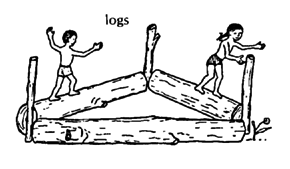CHAPTER 62
Developmental Aids
In this chapter we look at the design details of aids for lying, sitting, standing, balance, use of hands, and communication. Aids for walking are in Chapter 63.
Whether or not a particular child needs an aid, and what kind of aid she needs, must always be carefully and repeatedly evaluated. An aid that helps a child at one level of development may actually hold her back at another. When considering aids, we suggest you first read the chapters on child development, those covering the particular disability of the child, and Chapter 56.
| Note: Many developmental aids have already been shown in PART 1 of this book, especially in Chapter 9 (cerebral palsy), and in Section C, on child development. Aids and equipment for play and exercise are in PART 2, Chapter 46 (Playgrounds). Wheelboards and wheelchairs are in Chapters 64, 65, and 66. |
Lying aids
Lying face down is a good position for a child to begin to develop control of the head, shoulders, arms, and hands, and also to stretch muscles in the hips, knees, and shoulders. However, some children have difficulty in this position. For example:
![]()

Rosa cannot lift her shoulders. She has to bend her neck far back to lift her head. |

Juan does not have enough control and balance to reach out his arms. |

A firm pillow under the chest may help both these children to lift their heads better and to reach out. |
A 'wedge' or slanting support is often helpful. The height depends on the needs of the particular child.

Diana manages best on a wedge high enough so that she can lift herself up a little at arms length. (Height is the length from wrist to armpit.) |

Cassio does better on a lower wedge, so he can lift up on his elbows. (Height is slightly less than length from elbow to armpit.) |
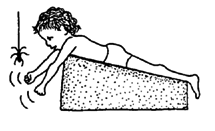
Carmen and others with little or no arm or hand control do best when their arms can dangle. She can see them moving when she moves her shoulders. |
Wedges can be made with:
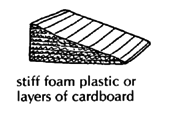
|

|
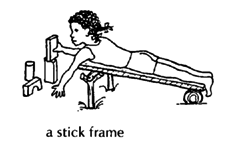
|
![]()
| If necessary, a leg separator can be added (see
Page 81).
|
| Or sides can be included for the child who needs to be
positioned with supports or cushions.
|
Some children are able to control their shoulders, arms, and hands better when lying on one side.
![]()
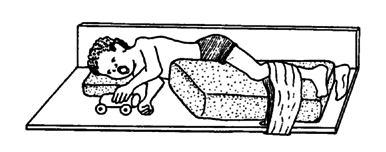
A side-lying frame may be helpful for some children with severe cerebral palsy. Try cushions or padded blocks of different shapes until you find what works best. Use straps only if clearly needed to keep a good position.
Also see lying frames for straightening hip flexion contractures (Page 81 and 86), and lying frames with wheels (Page 618 and 619).
ADJUSTABLE BEDS
This design from the Centre for the Rehabilitation of the Paralysed in Bangladesh adjusts easily from an upper position to a lower position.
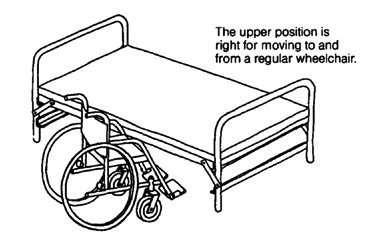
|

See Page 590 |
These metal beds and wheelchairs are welded together by paraplegic workers. For the 'coconut fiber' mattresses they use, see Page 199.
ADJUSTABLE BACK SUPPORT CLAMP

Supporting a severely paralyzed person so he lies on his side can be difficult. Pillows easily move or slip. This simple clamp helps solve the problem. It was designed and made by disabled workers at the Centre for the Rehabilitation of the Paralysed, Dacca, Bangladesh (see Page 518).
| CAUTION: To prevent pressure sores, be sure the child changes position often (see Chapter 24). |
Sitting Aids
![]()
A wide variety of early sitting aids are included in the chapter on cerebral palsy (see Page 97 and 98). Special seating adaptations for chairs and wheelchairs are in Chapter 65. Here we include a few more ideas:
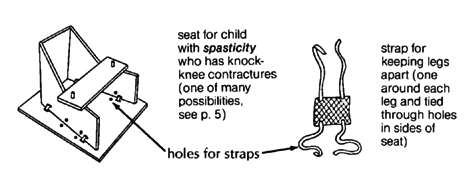
See Page 5 |

See Page 421 |
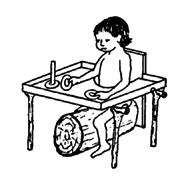
A log or roll seat helps the child with spasticity or poor balance sit more securely with legs spread. Log should be as high as the knees. Leave a little room between the cut-out circle in the table and the child's belly. |
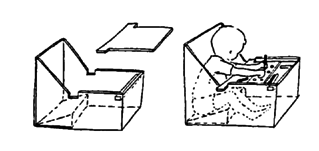
seat for a child with spasticity whose body stiffens backward. Design from Handling the Young Cerebral Palsied Child at Home (see Page 638). |
OTHER IDEAS FOR HOLDING LEGS APART
from Don Caston and AHRTAG
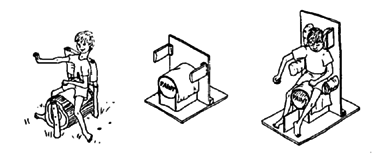
from other parts of this book

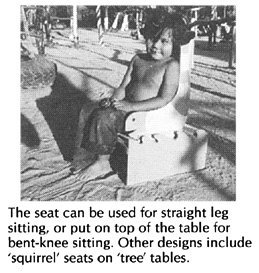
For more ideas on adapted seating, see Chapters 9, 35,and 65. Also, see scooters and walkers with roll seats, Page 98.
Standing aids (See also Page 99, 312, and 500.)
![]()
Many children who have problems with balance or control for standing may benefit from standing or playing in a 'standing aid'. Even for the child who may never stand or walk on her own, being held in a standing position with weight on her legs helps circulation and bone growth and strength.
STANDING BOARD
Sometimes a child who does not have enough control or strength to hold his head up when lying.
can hold his head up better when sitting or standing.
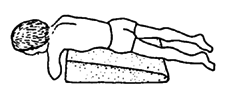
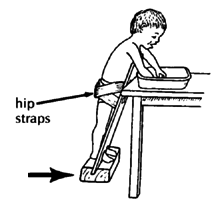
A simple standing board can help hold the child in a stable position. This one leans against a table.
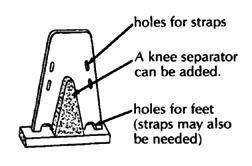
LEANING BOARD
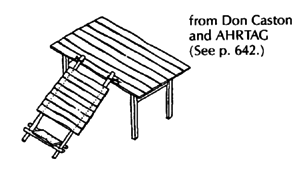
See Page 642. |
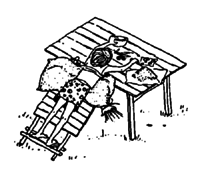
|
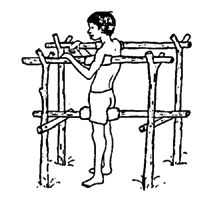
|
BACK-BOARD
This can be used to gradually bring a child to a standing position. It is especially useful for older children who get dizzy if stood up straight too quickly. This can happen after a spinal cord injury or a long, severe illness. The child can be stood up gradually and for longer each day.
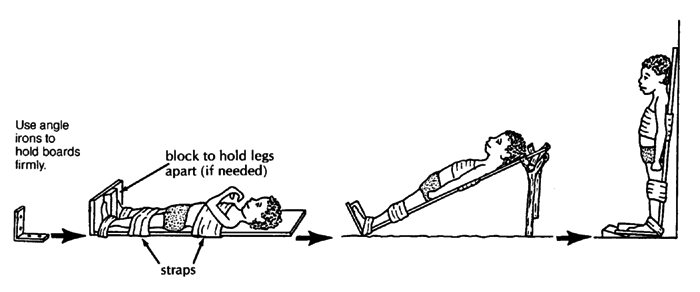
STAND-IN TABLE

OTHER IDEAS

STANDING FRAMES

These are mainly for a child with contractures or painful joints who has difficulty standing straight. The child can gradually be straightened up.
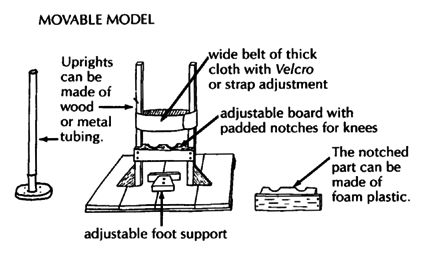
|

|
STANDING-AND-WALKING FRAME
This is a useful aid to begin standing and walking, for children paralyzed or severely affected below the waist (paraplegia, Spina bifida, diplegic cerebral palsy).
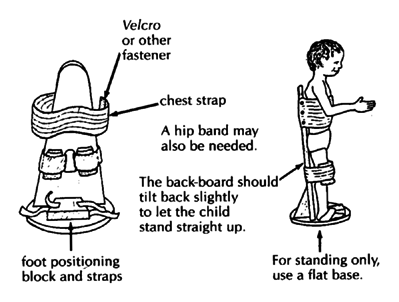
|
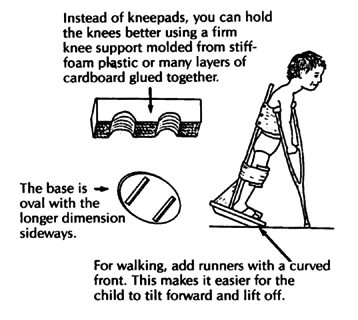
|
STANDING-WALKING BRACE
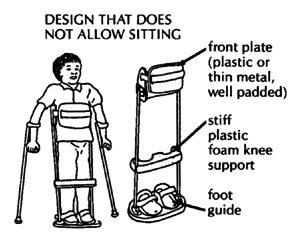
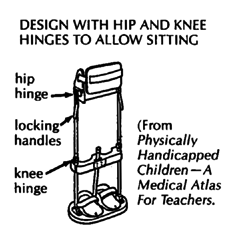
This has the same use as the standing-walking frame above, but is especially useful for children who need to learn how to walk before they are fitted for braces with a hip band or body brace.
Aids for balancing and body control
![]()

Activities for improving balance are discussed on Page 105, 311, and 312. Here we bring together a few of the aids for balancing that are shown in different parts of this book, together with a few new ones.
BALANCE BOARDS
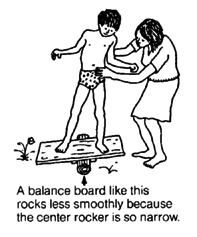
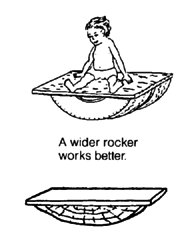
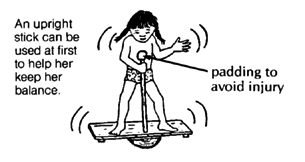
BALANCE BEAMS
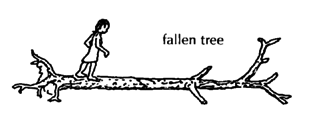
|
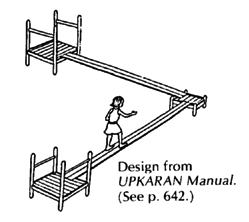
See Page 642. |
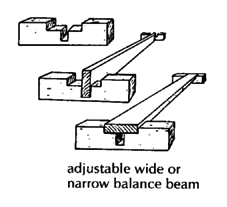
|

For the child whose ankles bend in, |
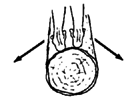
walking on a log helps bend the ankles outward. |
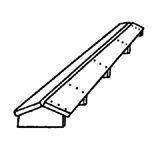
Or the child can walk on slanting boards, like this. |

For the child whose ankles bend outward, |
To improve ba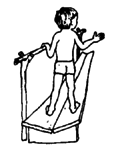
walking on boards like this helps bend the ankles inward.
lance also see swings, rocking horses and merry-go-rounds.
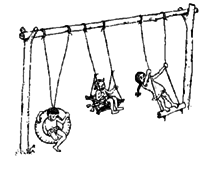
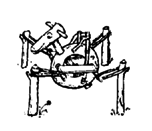
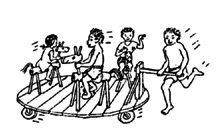
Other aids
Many aids not yet described in PART 3 have been described in other parts of this book. Here is a brief summary of some of these to give you basic ideas and tell you where to look. We also give a few ideas of aids not shown before.
EATING AND DRINKING AIDS

|

|

|

|

|

|
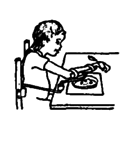
|
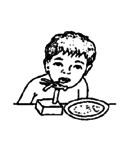
|

|
TOILETING AIDS

|

|

|

|

|

|

|
HOLDING AND REACHING AIDS (Also see Page 6, 223, 230, 335, 336, 431, and 507.)

key holder |

wash cloth mitten for washing dishes (or self) |

button fastener |
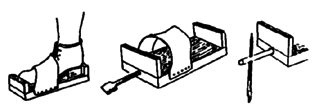
aids for working with feet |
SPIRAL HOLDING AID

|
Bolt it to a piece of plastic pipe or bamboo.
|
Use it like this.
|

|

Note: For larger objects such as a knife or ruler, the spiral can be made of garden hose. |
REACHING TOOL
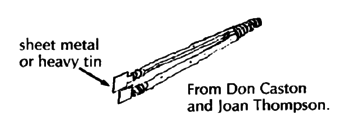
ALL-PURPOSE TOOL

WRITING AIDS (Also see Page 189, 223, 230, and 501.)

|
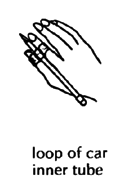
|
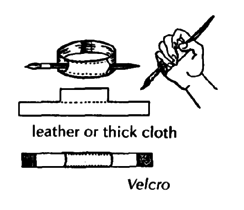
|

|
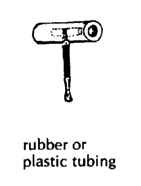
|
COMMUNICATION AIDS (Also see "Blindness" Page 253 to 254 and "Deafness" Page 259 to 275.)
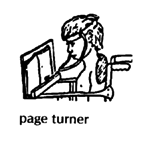
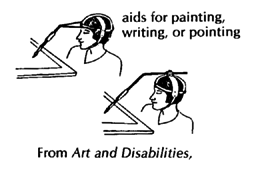

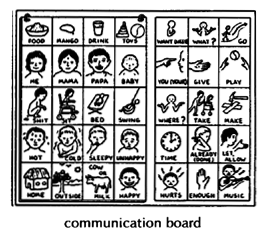
See Page 641.
PHYSICAL EXAMINATION, MEASURING AND RECORDING AIDS
INSTRUMENT FOR LEVELING HIPS
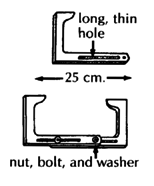
Cut 2 pieces of thin plywood like this. Fasten them together so that they slide back and forth.
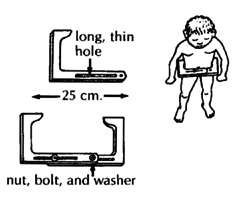
To use, close instrument around child's waist and push down against hip bones. Then raise or lower shorter leg until the instrument is level.

aid for measuring leg length difference (Page 34 and 549)

'flexikins' for measuring contractures and deformities (Page 43 to 50) |
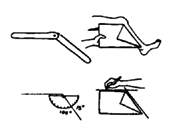
|

rib-hump angle measurer (Page 163) |
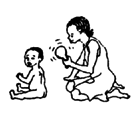
aids for hearing examination (Page 450) |
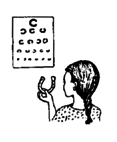
|
FOOT CONTRACTURE PREVENTION AIDS
Also see Chapter 59, "Correcting Joint Contractures," and Chapter 58, ''Braces".

|

|
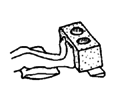
|
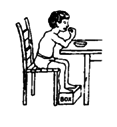
|

|
EXERCISE AIDS

|

|
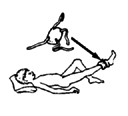
|
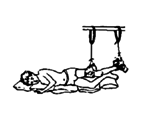
|
 Page 146
Page 146 |
 Page 149
Page 149 |
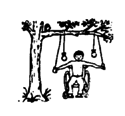
|

|

|

|
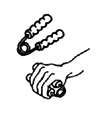
|
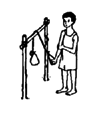
|

